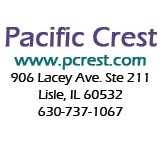|

        



|
 |
 |
|
This article (2 of 14) is part of our continuing series on the
dimensions of educational transformation. These are the ways
in
which education has and is changing from the tradition-based
approaches to what Process Education™ has to offer. |
|
 |
The idea of
"ownership of learning" is a thorny one and it is critical
that we examine the model are we using when we talk about
ownership. If learning is a ‘thing’ that can be given to
someone else, then it is a commodity that can be assigned a
value and transferred from one individual to another. And
indeed, this is the way we often talk about learning — we
charge fo  r
an education (a ‘thing’ of value that can be bought and
sold), we talk about people who ‘have/do not have’ an
education (a thing which can be separated from the ‘owner’),
and perhaps most telling, we even ask, "Where did you get
your education?" (as if this thing is kept only in certain
places). In this roughly capitalistic model, students are
consumers who, after deciding where to buy their education,
show up to receive it. They have willingly accepted that
they are empty vessels, waiting to have their education
poured into them by an educator. And once they’ve received
that education, they are given a piece of paper certifying
that it is now theirs. This educational process — their
learning — was necessarily directed by educators. As empty
vessels, students cannot possibly have the knowledge
necessary to direct any part of the ‘pouring process’. r
an education (a ‘thing’ of value that can be bought and
sold), we talk about people who ‘have/do not have’ an
education (a thing which can be separated from the ‘owner’),
and perhaps most telling, we even ask, "Where did you get
your education?" (as if this thing is kept only in certain
places). In this roughly capitalistic model, students are
consumers who, after deciding where to buy their education,
show up to receive it. They have willingly accepted that
they are empty vessels, waiting to have their education
poured into them by an educator. And once they’ve received
that education, they are given a piece of paper certifying
that it is now theirs. This educational process — their
learning — was necessarily directed by educators. As empty
vessels, students cannot possibly have the knowledge
necessary to direct any part of the ‘pouring process’.
This model is also
attractive because it fits into traditional practices and
economic theories. It supports the cultural notion of a
hierarchy of experts to whom students should come to receive
wisdom and also streamlines education into a
one-size-fits-most process that allows for the filling of a
great number of empty vessels by far fewer educators, making
a kind of economic sense.
Logical verification
of this model would then come from examining students to
ascertain if they had indeed taken demonstrable ownership of
educational content. But as has been shown repeatedly,
students who are certified to have obtained ownership of an
education can’t seem to demonstrate that ownership in
practical fashion. What happened? Did they lose it? (Did the
vessel perhaps leak, even as it was being filled?) Maybe it
never really was theirs (pouring went on, but filling did
not).

A Different Option
An alternative model,
which not only explains the failures of the traditional
model but also proposes a path to greater learner success
through increased ownership of learning, has been proposed
by both John Dewey and Paolo Freire, among others. For both,
learner experience is the foundation of any meaning
constructed in a learning situation. That is, students are
not empty vessels; they enter a learning environment with a
history, experiences, preconceptions and values. The goal of
learning is then not to strip away a student’s previous
experience but rather to teach students to monitor, mentor,
facilitate, and ultimately be responsible for their own
learning. Students are then partners in the enterprise of
education, actively engaged and pursuing, rather than
passively observing and accepting. If students can be freed
from the model of directed learning, their ability to
perform as learners is no longer limited to what their
instructor says, plans, or assigns. The participatory nature
of self-directed learning not only allows a student to take
ownership of their learning, but requires that they do so.
Affective Reactions
Students who have had
much exposure to the traditional model often react
negatively to an environment where they are given even
partial ownership of their learning. Common affective
responses run the gamut from negative judgment of a
facilitator ( "Why aren’t you doing
your job?"), to fear of responsibility ("It
shouldn’t be up to me to decide what I should do or learn"),
to sheer exasperation ("How am I
supposed to know what to do or learn if you won’t tell me?!").
These types of responses are not limited to undergraduates,
but are also often experienced by adult learners and even
educators, sometimes even more strongly, as there has been
longer term exposure to the traditional model.
The change from directed to self-directed learning is a
radical shift; possibly
even a paradigmatic shift. But if the goal is to foster
learners who self-mentor,
self-assess, self-validate, and make the most of both their
potential and the
learning situations in which they are involved, it is also a
shift well-worth making. |
|
|
|
|

